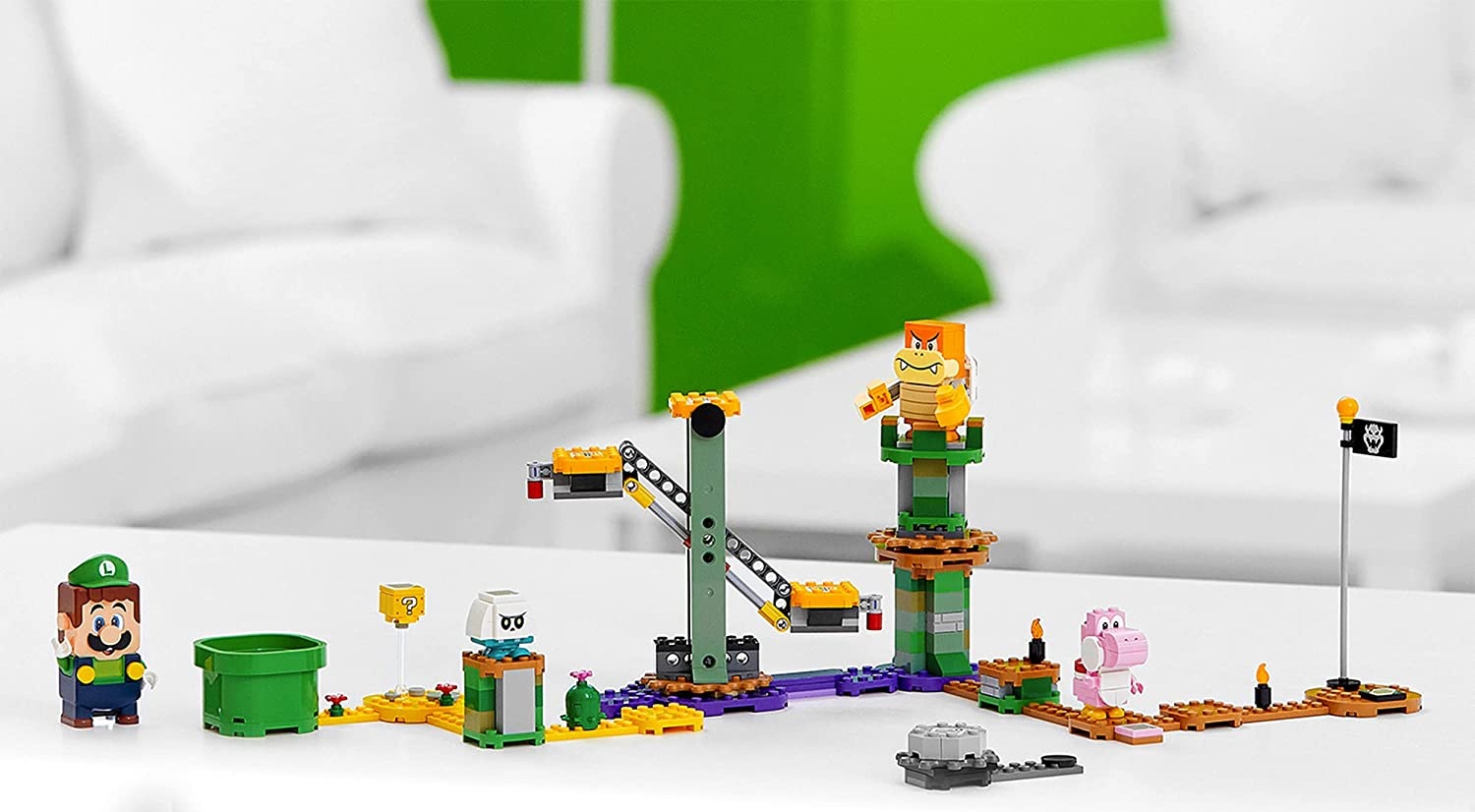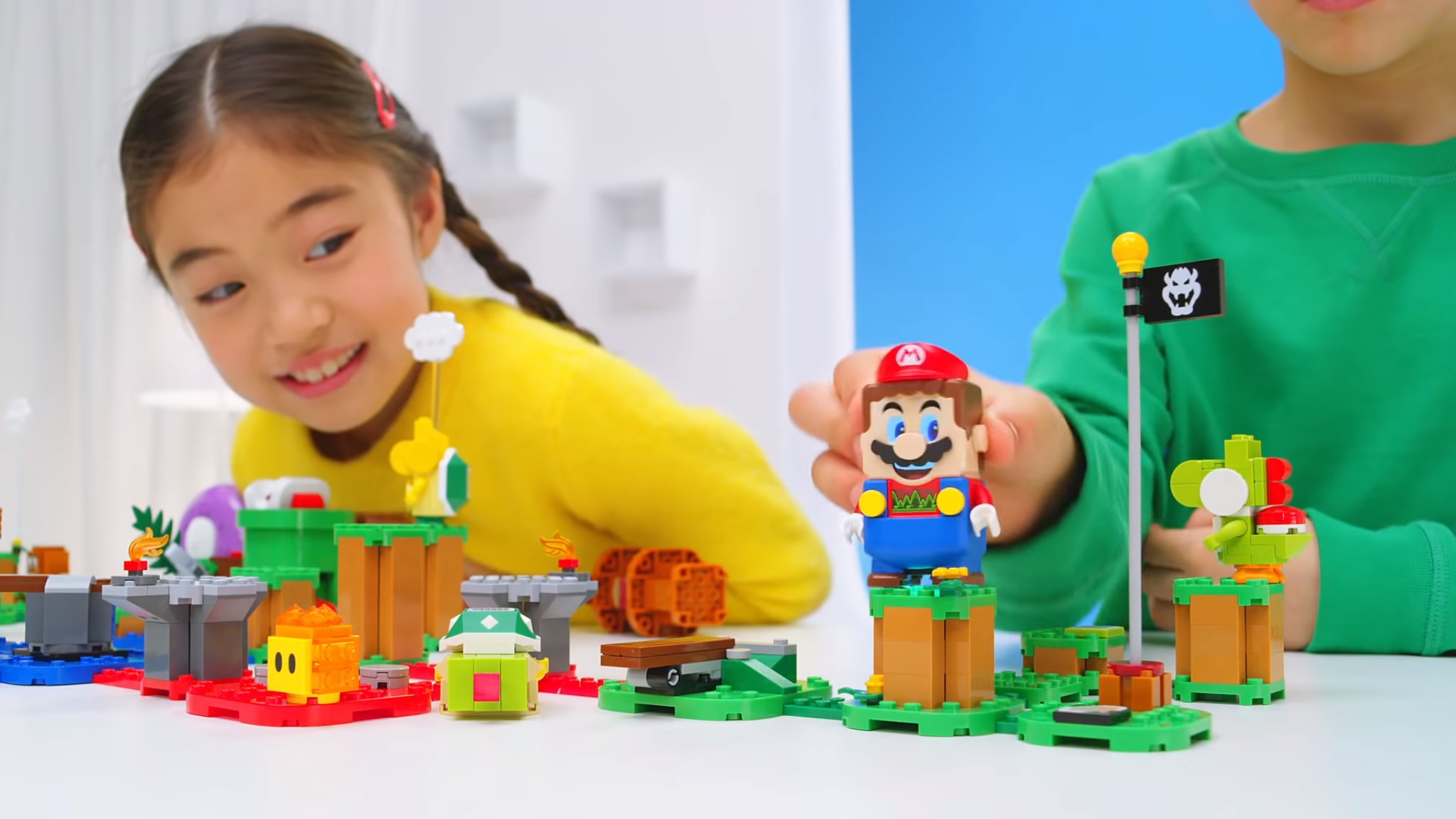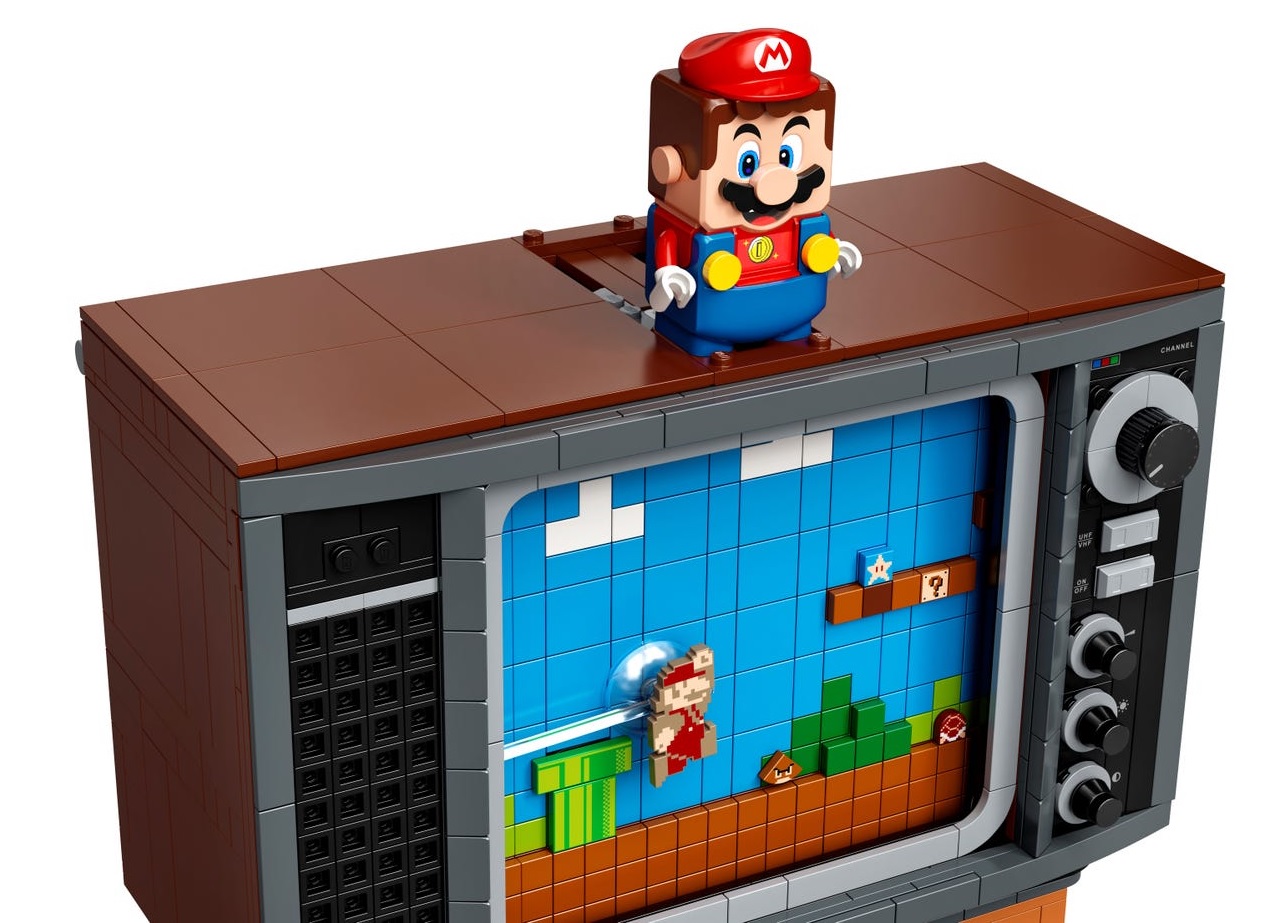Lego Super Mario's Luigi envisions a dark future for toys
Lego Super Mario has an invasive advertisement for its Luigi expansion

The Lego Super Mario set will soon get a Luigi expansion. That’s good news for kids and collectors alike. The popular Lego Super Mario sets are essentially game/toy hybrids that challenge builders to construct a real-world Mario level, then guide a Lego version of the portly plumber through it, fighting foes and dodging traps along the way. It’s good, clean, somewhat expensive fun for children — and that’s why it’s a little bit insidious that Lego Mario himself now acts as an interactive advertisement for the Luigi set.
Lego fan site The Brick Fan has essentially confirmed Lego Super Mario Adventures with Luigi, having seen the listing pop up on Amazon China. Writer Allen Tran saved product shots of the Luigi set, which depict Luigi working his way through an obstacle course, fighting off a Koopa Kid and encountering a pink Yoshi along the way. The listing is no longer up, so we don’t know how much the set will cost; other than that, it’s pretty much what Lego fans would expect from a Mario expansion set.
- Play the best Nintendo Switch games
- Try the best Nintendo Switch accessories
- Plus: PS5 is the fastest-selling console in history — though you can’t buy one
The story gets a little darker, however, when you consider that the Amazon China listing is not the first hint we had about the Luigi set. Instead, it came from a firmware update for the initial Lego Mario toy. Eurogamer reported the sequence of events. First, a Lego aficionado on Twitter called Jay Phoenix noticed that his Mario toy cried out for “Luigi!” three times upon waking from sleep mode. Mario had never done that before.
So, was fiddling about with LEGO Mario for the first time in ages cos of that new treasure hunt update and pic.twitter.com/Ztk44ZAY3GApril 15, 2021
Lego fans deduced that a Luigi toy must be on the way, and queried the official Lego Facebook page about it. The Danish brick builder replied with a coy “Stay tuned!” and a smiley face.

Children vs. advertisements
On the one hand, this is simply a clever way to introduce a new toy in an ongoing product line. The initial Mario sets have been out for a while; Luigi is one of the most popular characters in the Mario franchise; successful toy lines get new entries over time. So far, so good. But something about a toy downloading a firmware update, then telling you to go out and buy more stuff, feels a little unwholesome.
Toys and advertisements have had something of a fraught history over the last 30 years. First off, it’s important to understand that very young children generally don’t understand the difference between TV shows and advertisements. In the 1980s, then-president Ronald Reagan and a conservative FCC gutted regulations about how advertisers can (and can’t) sell products to children. If you ever wondered why children’s television before the ‘80s was primarily educational, and children’s television after the ‘80s was primarily about selling toys, now you know.
The bottom line is that children are especially susceptible to advertisements, and their favorite properties tend to blur the lines between storytelling and advertising. While advertisers love selling toys, however, the toys themselves are relatively blameless in this whole arrangement.
Get instant access to breaking news, the hottest reviews, great deals and helpful tips.
Toys can be a vital component in what’s known as “unstructured play,” which is a development necessity for young children. Unlike structured play — in which a parent or teacher leads a fun activity with a learning goal in mind — unstructured play is what happens when you simply let kids do what they want to do. This encompasses everything from playing tag outside with friends, to constructing a Lego set alone. While the Super Mario Lego sets have more goals and objectives than, say, a nonelectronic Mario action figure, the overall experience is still completely at the child’s discretion.

Unstructured play
That’s why the Lego incarnation of Super Mario calling out for his brother arguably crosses a line of good taste. Unstructured play is a child’s last bastion against a world of advertisements. Television, mobile games and streaming services constantly inundate children with ads — often, children who are too young to know that ads are distinct from more traditional forms of storytelling.
Toys, on the other hand, let children exercise their imaginations, separated from the desire to buy more stuff. Unstructured play is all about self-sufficiency; ads are all about making people (including children) believe that their current situations are insufficient. Mario calling out for his Lego brother is admittedly not as invasive as a loud, repetitive TV ad. But having Mario “wake up” during an unstructured play session and wonder aloud why the child doesn’t have more toys? A cute, innocuous advertisement is still an advertisement.
The whole situation becomes even tackier when you remember that Mario didn’t always call out for Luigi. This comes from the result of a firmware update. Parents who bought a Lego Mario set for their kids had no way of knowing, at the time, that it would become a talking advertisement for the rest of the product line. And who’s to say what Mario and friends might try to sell in the future? It’s not necessarily an ethical issue, but the Lego Mario toys have much better things to do than become living ads for themselves.
At the risk of becoming a shrill “won’t somebody please think of the children?” killjoy, I think it’s worth keeping ads and unstructured play for children separated. By advertising the Luigi set, the Lego Super Mario toy crosses that line, and sets a bad precedent. It’s particularly disappointing coming from a company like Lego, which promises:
“Free play is how children develop their imagination – the foundation for creativity. Curiosity asks WHY and imagines possible explanations. Playfulness asks WHAT IF and imagines how the ordinary becomes extraordinary, fantasy or fiction. Dreaming it is a first step towards doing it.”
Mario’s latest update doesn’t feel particularly creative, curious or playful.

Marshall Honorof was a senior editor for Tom's Guide, overseeing the site's coverage of gaming hardware and software. He comes from a science writing background, having studied paleomammalogy, biological anthropology, and the history of science and technology. After hours, you can find him practicing taekwondo or doing deep dives on classic sci-fi.
